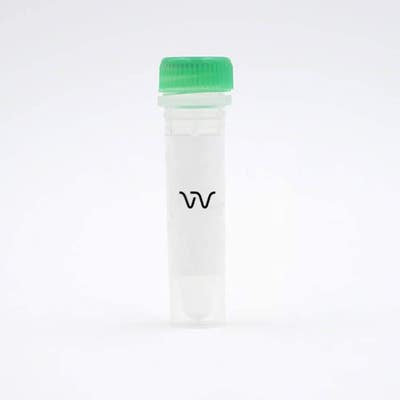

HTRF Dasatinib Red Ligand, 1 nmole


HTRF Dasatinib Red Ligand, 1 nmole






| Feature | Specification |
|---|---|
| Application | Biochemical Enzymatic Assay |









Product information
Overview
This compound is derived from Dasatinib, which is a well known inhibitor of the BCR-ABL and SRC families of Kinases. Dasatinib, which is an ATP-competitive Kinase inhibitor, is used as a drug to treat chronic myelogenous leukemia and acute lymphoblastic leukemia. It has been shown to bind with an affinity of <100 nM to about 16% of the Kinases and mainly to RTK. It is therefore useful to address multiple Kinases in the HTRF Kinase Binding assay platform. The ‘d2’ fluorescent dye used absorbs with its maximum near 650 nm and fluoresces near 670 nm. It is used as an acceptor molecule in HTRF assays.
Dasatinib-Red is supplied as a 25 µM solution in DMSO.
How it works
Kd determination: assay principal
The binding of Dasatinib-Red is detected in a sandwich assay format using the Anti Tag labeled with Europium Cryptate (donor) which binds to the tagged Kinase, and a red fluorescent tracer labelled with d2 (acceptor).
The detection principle is based on HTRF technology. The HTRF ratio (665/620) will increase upon the addition of more of the tracer, and will saturate depending on the dissociation constant (Kd) of the tracer to the tagged kinase.
To know whether Dasatinib-Red is the tracer best suited to your tagged kinase of interest, we advise you to try the Kinase Binding Discovery kits.

Kd determination assay protocol
Saturation binding experiments of Dasatinib-Red can be run in 96- or 384-well plates (20 µL final volume).
First, a dilution series ranging between 0 and 1 µM of Dasatinib-Red in the Kinase Binding Buffer is prepared in a 96-well non-binding plate. Next, 5 µL of Kinase Binding Buffer are dispensed into the final 96- or 384-well plate. Then 5 µL of tagged-Kinase are added, followed by 5 µL of Anti-tag Eu-cryptate. Finally, 5 µL of the red tracer solution are added.
The HTRF ratio is measured after 1 H of incubation.

IC50/Ki determination assay principle
The binding of Dasatinib-Red is detected in a sandwich assay format using a specific Anti-GST, 6HIS antibody or Streptavidin labeled with Europium Cryptate (donor), which binds to the tagged Kinase, and a red fluorescent Dasatinib labelled with d2 (acceptor).
The detection principle is based on HTRF® technology. The HTRF ratio (665/620) will increase upon the addition of more Dasatinib-Red, and will saturate depending on the dissociation constant (Kd ) of Staurosporine-Red to the tagged kinase. With the addition of an inhibitor of the kinase, Dasatinib-Red will be displaced and the HTRF signal will disappear, depending on the dose.

IC50/Ki determination assay protocol
Pharmacological evaluation of inhibitors of interest can be run in 96- or 384-well plates.
First, a dilution series of inhibitor ranging between 40 µM and 0.23 nM is prepared, wih 5 µL of each concentration dispensed into the plate. Then 5 µL of tagged-Kinase are added, followed by 5 µL of anti-tag Eu-cryptate. Finally, 5 µL of Dasatinib-Red solution are added, prepared at 4x the final concentration. The HTRF ratio is measured after 1 H of incubation.
Analyses of the data give typical dose response curves ranging between 10 µM and 56 pM, enabling evaluation of the IC50/Ki values for the inhibitor of interest.

Assay validation
Saturation Binding (Kd)
Before perfoming competitive binding studies of inhibitors, the dissociation constant (Kd) of Dasatinib-Red has to be determined on the tagged Kinase of interest. This can be done with the help of the Kinase-GST/6HIS/biotin Discovery kits. A typical saturation binding experiment is performed using tracer concentrations between 0 and 250 nM, and measuring total- and non-specific binding signals. Subtracting the non-specific from the total binding signal gives the specific signal, which can be analysed to give the Kd. Here an example is shown on the determination of the Kd (22 nM) of Dasatinib-Red on 5 nM BRAF-GST.

Competitive Binding (IC50/Ki)
Dose response curves of various known kinase inhibitors (Staurosporine, Dasatinib, PP2, Imatinib, Tozasertib, Sunitinib, Gefitinib, and Sorafenib) were measured using Dasatinib-Red at its Kd (22 nM) on 5 nM BRAF-GST. Dasatinib and Sorafenib showed good potencies, in good correlation with literature values. Staurosporine, Tozasertib, Sunitib and Gefinitib did not compete, as can be expected for BRAF.

Specifications
| Application |
Biochemical Enzymatic Assay
|
|---|---|
| Brand |
HTRF
|
| Detection Modality |
HTRF
|
| Product Group |
Fluorescent Reagent
|
| Shipping Conditions |
Shipped in Dry Ice
|
| Target Class |
Kinases
|
| Technology |
TR-FRET
|
| Therapeutic Area |
Metabolism/Diabetes
Neuroscience
Oncology & Inflammation
|
| Unit Size |
1 nmol
|
Video gallery
Resources
Are you looking for resources, click on the resource type to explore further.
A BRD4 Case Study
BRD4 is involved in gene transcription and is frequently dysregulated in many types of cancer. It is one of the...
SDS, COAs, manuals and more
Are you looking for technical documents related to the product? We have categorized them in dedicated sections below. Explore now or request your COA/TDS, SDS, or IFU/manual.
- LanguageEnglishCountryUnited States
- LanguageFrenchCountryFrance
- LanguageGermanCountryGermany
- Lot Number06ALot DateApril 18, 2027
- Lot Number06RALot DateApril 18, 2027
- Lot Number06RALot DateApril 18, 2025
- Resource TypeManualLanguageEnglishCountry-


How can we help you?
We are here to answer your questions.






























